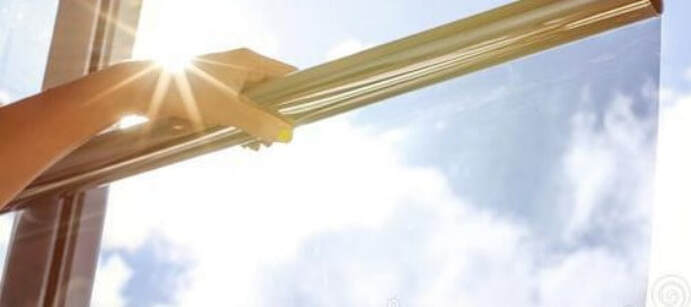1. Solar Control FilmIf you live in a sun-soaked area, sunblock window tint is a great option.
This window tint partly absorbs and reflects 99% of UV rays from the sun. As a result, it regulates indoor temperatures so you stay cool in summer and warm in the winter. Solar control film also reduces glare, prevents your interior furniture from fading, and cuts down your energy bill. It also means you get to enjoy the benefit of more natural light while being protected by the sun's harmful rays. You cant choose a film in neutral tones ranging from silver to copper so it enhances your home's curb appeal. 2. Glare Control Window FilmYou know when you try to watch TV but the sun's glare makes it impossible to see your screen? This is one of the most practical types of tint as it means you can enjoy your electronic devices while letting the sun get in. An AR (anti-reflective) coating on eyeglasses has the same technology as it diffuses the light when it passes through the glass. 3. Mirror FilmMirror tint comes in both one-way and two-way options. For home, the one-way mirror option is best so you can welcome light coming in while preventing anyone from taking a peek.
This is the best home window tinting for privacy especially if you have large windows or doors that look directly into living areas of your home. 4. Decorative FilmThis type of film is made from dyes and is the most inexpensive type of tinting for homes. It gets the color by melting and stretching the window tint.
As they're the thinnest type of window tint, they don't block out UV rays or increase window strength, but they do give you added privacy. For example, decorative film is a great solution if your bathroom doesn't have frosted windows. The decorative film comes in an array of patterns, designs, and colors which is great if you want to incorporate new design elements into your home. But don't over-do it. Decorative film can be tasteful if you're adding a bold color or stripes to a window, but do it sparingly otherwise you'll turn your home into an eye-sore! 5. Security FilmIf you want to prevent storm damage and deter intruders, install security film as it's the thickest.
Security film is often clear and doesn't absorb or reflect much heat. Your window may shatter during a storm but security film reduces the damage to a large crack so your window can hold out longer. It also means it'll be harder for intruders to see inside your home which is important if you have large windows or have many valuables in your home. 6. Ceramic Film (Non-Reflective)Ceramic film is one of the most expensive options as it doesn't contain dyes, metal, or carbon. As you can guess from the name, it's made from microscopic ceramic particles so the tint is non-conductive and non-reflective.
This type of window film is newer compared to other tints and it reaps many benefits. For example, ceramic window tints cut out up to 50% of infrared light and up to 99% of harmful UV rays. It's also durable and promises fade and glare resistance. Other benefits include strengthening your windows against burglary and storm damage, rendering it shatterproof, and regulating the temperature of your home. But because of this, ceramic window films are the most costly. 7. Metalized FilmInstead of dye, these films have metals like copper, nickel, aluminum to function as a layer against the sun. This kind of window tint deflects the external heat during the summer while keeping the interior warm during winters. As a result, you'll save on bills all-year-round. Similarly made, a deposited window tint is made by infusing various metals which helps reduce the heat. They're made possible because of deposition technology which means they're more affordable and readily available. Another option is hybrid films. They are a blend of dyed and metalized films. They offer a lighter tint while reflecting and absorbing heat, again regulating the temperature of your home. 8.Transitional window filmsTransitional window films are triggered to change from ‘clear’ to a ‘darker’, tinted state in the sun. Once exposed, the photochromic interlayer chemically responds within 30 seconds tinting glass when needed. -20-40% transition based on sun intensity -Activates within 30 seconds of UV exposure -Return to original state within five minutes out of direct sunlight. I hope this was helpful. Feel free to leave any questions or comments below 😎
8 Comments
|




